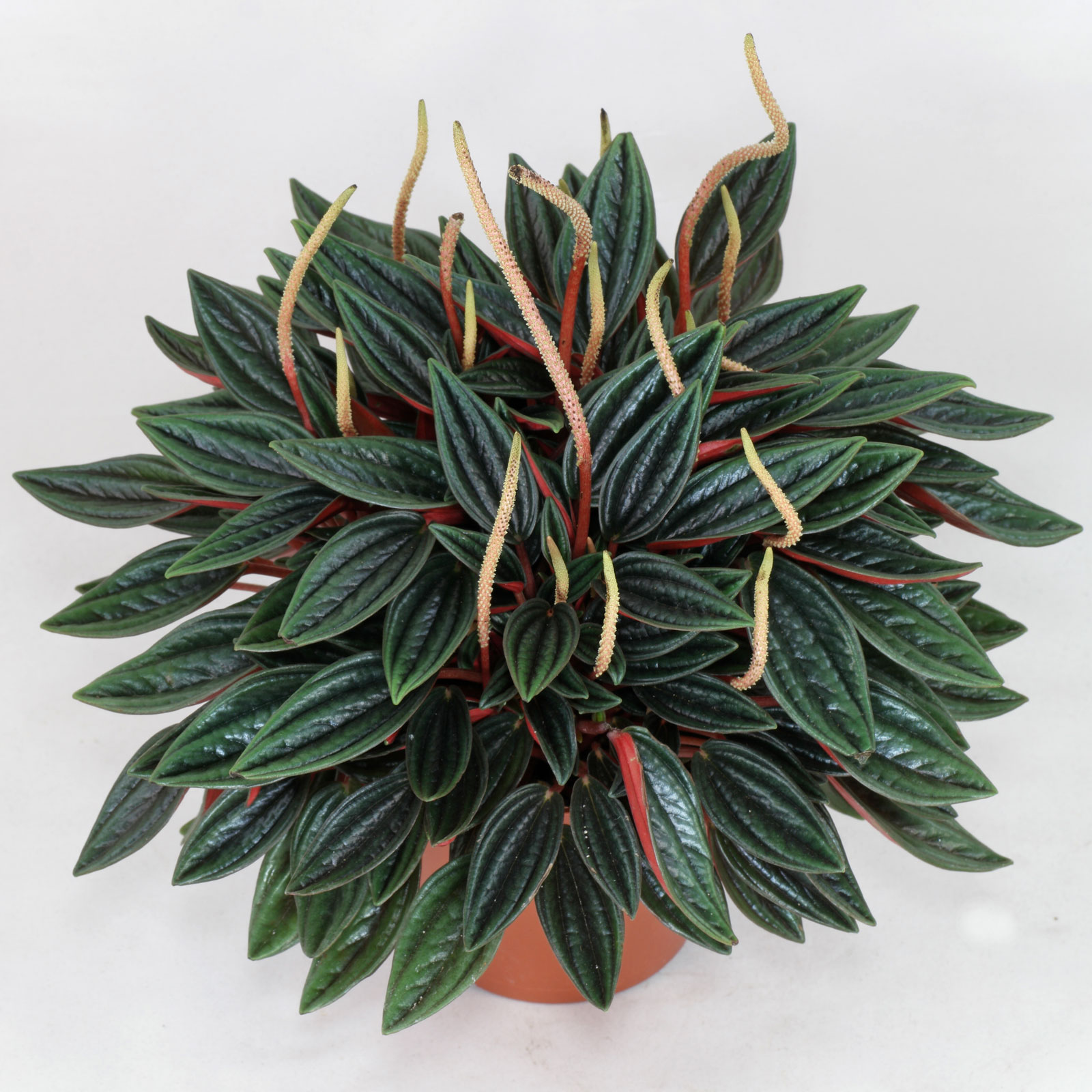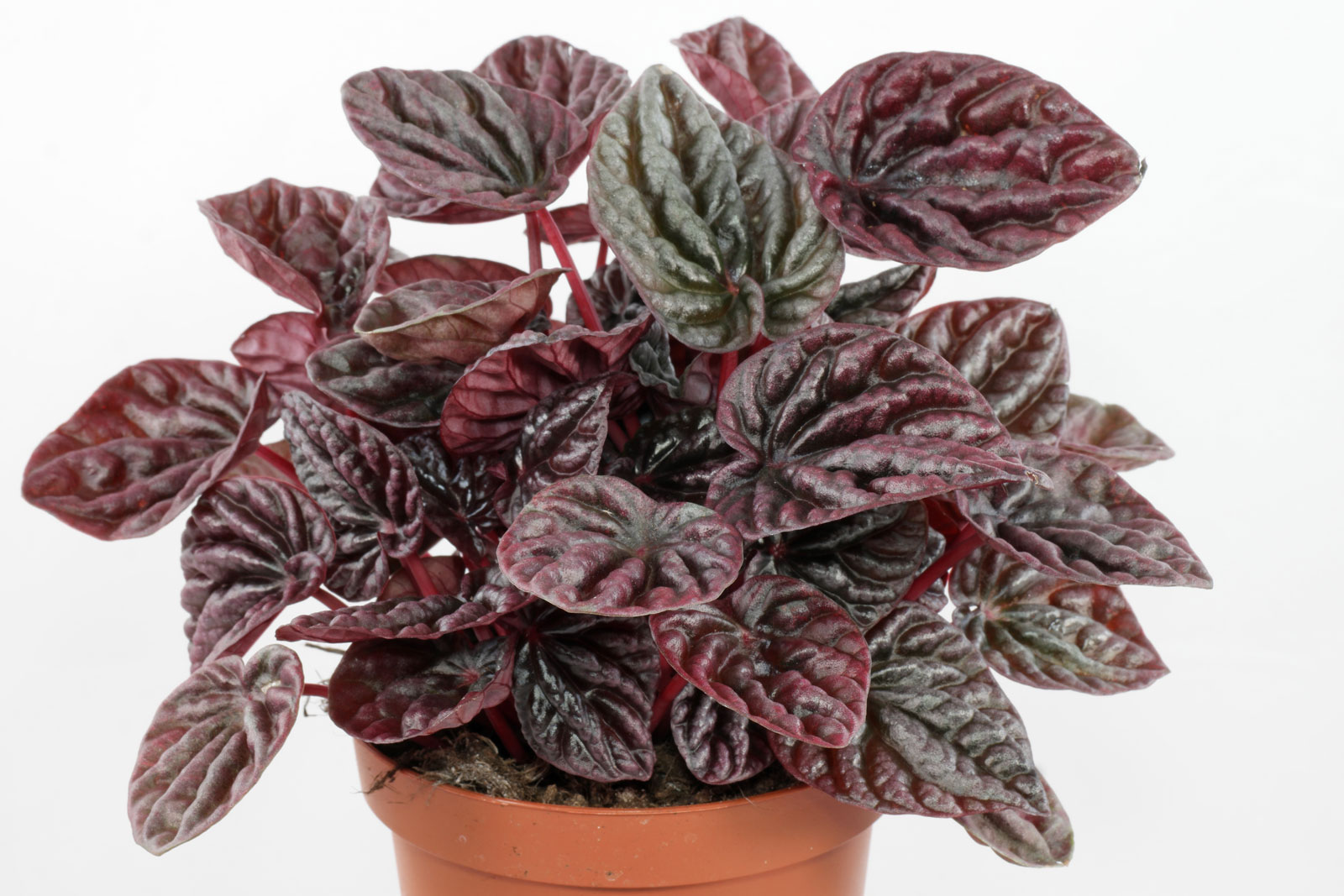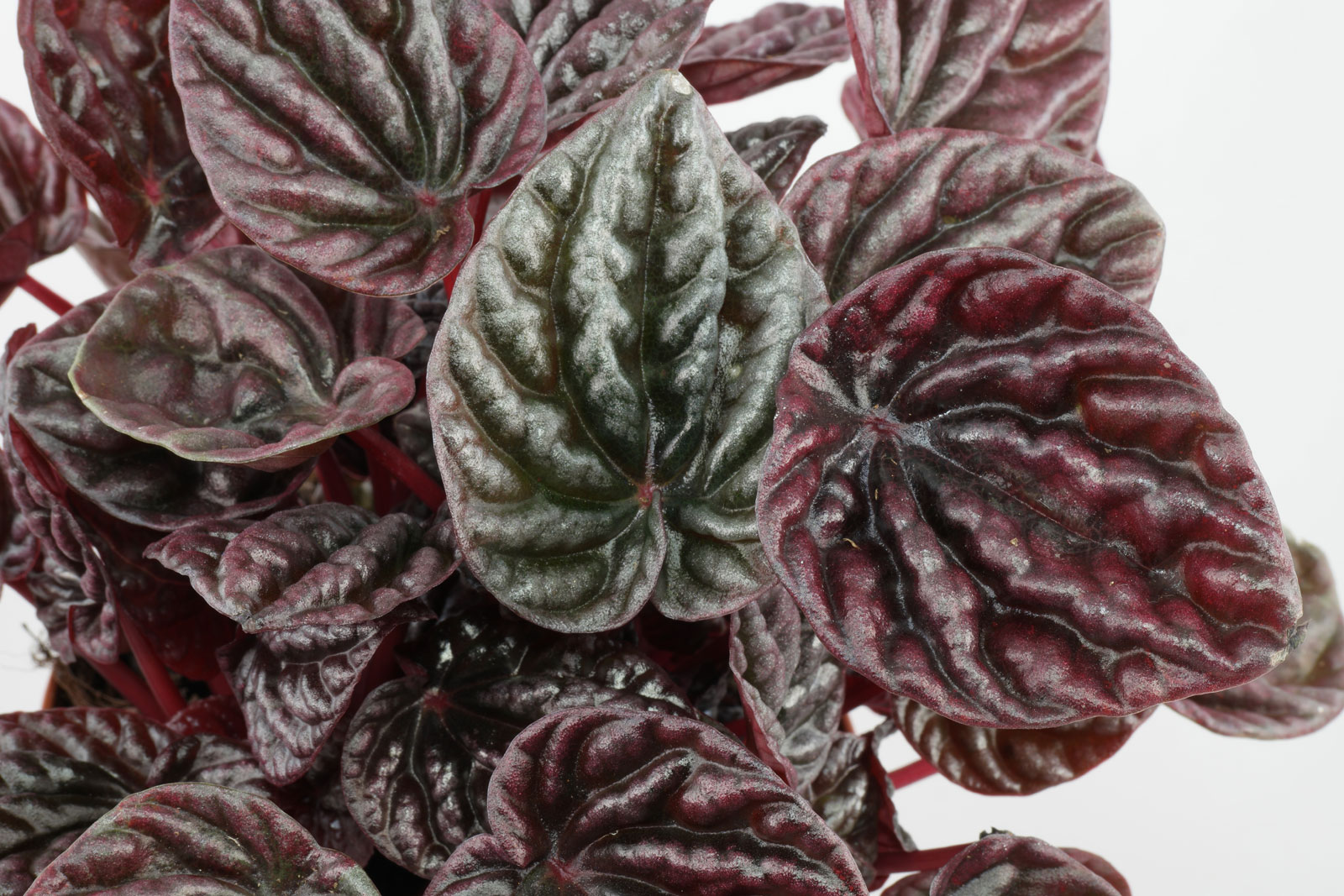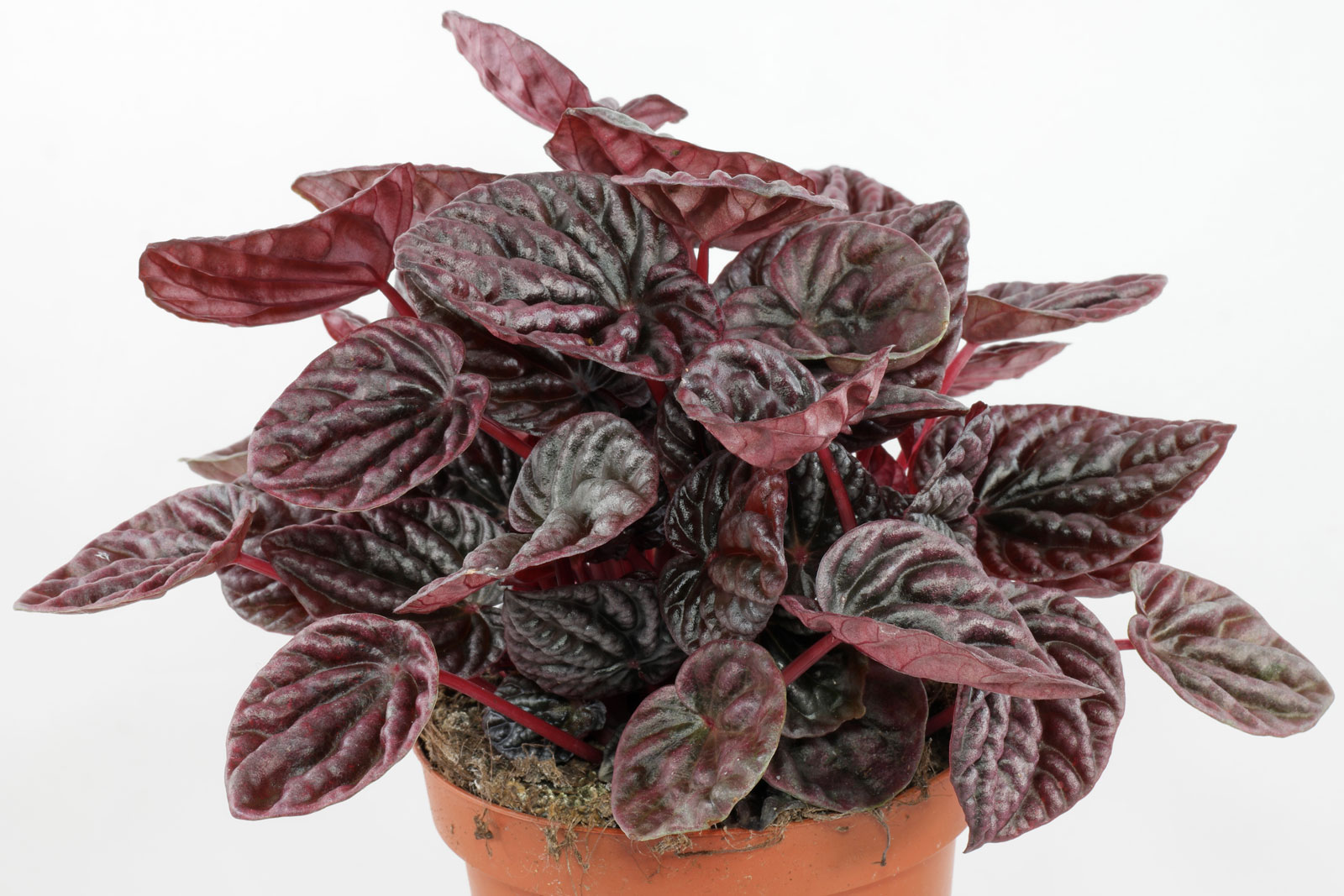Cultivars of Peperomia caperata are available with green, red, green-yellow and green-red-yellow leaves. Very popular is Peperomia caperata “Rosso”, which differs from the other varieties by its pointed leaves.

Plant care
Position: partly sunny to semi-shady, morning sun, evening sun, winter sun
Soil: indoor plant soil, cactus soil, herb soil, pure or mixed with clay granules
Watering: allow to dry, no waterlogging, no dryness of the bale
Fertilising: from spring to autumn with liquid fertiliser, fertiliser sticks, granules, pellets
Temperature: room temperature all year round, not below 15 °C for long periods in winter
Propagation: leaf cuttings
Position
The Position can be partially sunny to semi-shady, with morning, evening and winter sun. The hot summer sun is tolerated if the pot is not placed directly behind a window.
Soil
Potting mixes for indoor plants, herbs, vegetables or succulents are suitable as substrates. These substrates can be used pure or loosened up with clay granules. The roots of the tropical Peperomia species are sensitive to stagnant moisture.

Watering
The soil may dry out well between watering, but should not dry out. This ornamental pepper is only weakly succulent; if the soil dries out regularly, it becomes weakened and susceptible to infestation by pests.
Even if there is water in the coaster for days, this is not ideal.

Fertilising
The nutritional requirements of ornamental pepper are not very high, it is sufficient to start fertilising one year after purchase or repotting.
During the growing season, from spring to autumn, Peperomia caperata can receive liquid fertiliser every 4th to 8th week.
Long-term fertilizers such as sticks, granules or pellets can be given once each in spring and summer.

Temperature
Peperomia caperata likes it warm all year round and should not be placed below 15°C for long periods in winter.
Reproduction
Propagation can be done by leaf cuttings which take root at temperatures around 25 °C after 4 to 8 weeks. Another 6 weeks may pass before the first leaves appear.
A high humidity is advantageous for the cultivation. It protects the cuttings from drying out.
Large glasses are suitable for growing, which are aired daily to prevent mould growth.
A freezer bag that is put over the pot is also suitable.

Categories: Indoor Plants |

 Peperomia caperata cv.
Peperomia caperata cv.  Peperomia pereskiifolia
Peperomia pereskiifolia  Peperomia marmorata “Kirsten”
Peperomia marmorata “Kirsten”  Peperomia scandens “Variegata”
Peperomia scandens “Variegata”  Peperomia maculosa
Peperomia maculosa  Peperomia prostrata
Peperomia prostrata  Peperomia caperata “Rosso”
Peperomia caperata “Rosso”  Peperomia wolfgang-krahnii
Peperomia wolfgang-krahnii  Piper nigrum
Piper nigrum  Peperomia graveolens
Peperomia graveolens  Peperomia deppeana
Peperomia deppeana  Peperomia obtusifolia “Variegata”
Peperomia obtusifolia “Variegata”  Peperomia rotundifolia
Peperomia rotundifolia  Peperomia dolabriformis
Peperomia dolabriformis  Peperomia columella
Peperomia columella  Peperomia quadrangularis
Peperomia quadrangularis  Peperomia caperata “Lilian”
Peperomia caperata “Lilian”  Peperomia argyreia
Peperomia argyreia  Peperomia orba “Pixie Lime”
Peperomia orba “Pixie Lime”  Peperomia fraseri
Peperomia fraseri  Peperomia ferreyrae
Peperomia ferreyrae  Piper sylvaticum
Piper sylvaticum  Peperomia prostrata “Pepperspot”
Peperomia prostrata “Pepperspot”  Peperomia caperata “Schumi Red”
Peperomia caperata “Schumi Red”  Peperomia albovittata “Rana Verde”
Peperomia albovittata “Rana Verde”